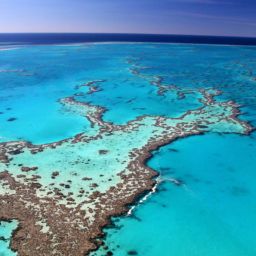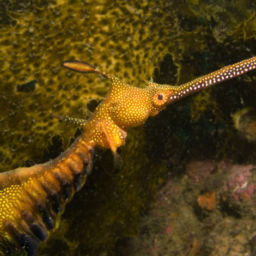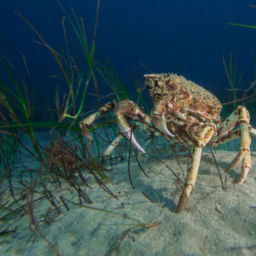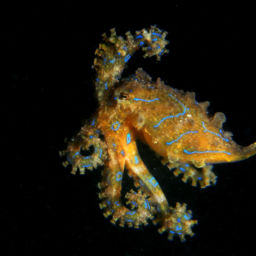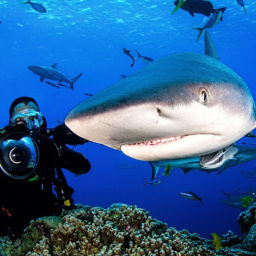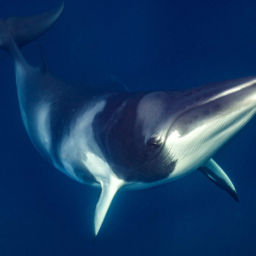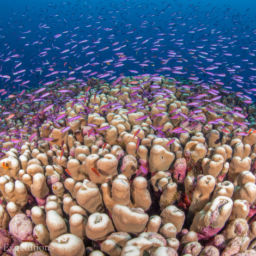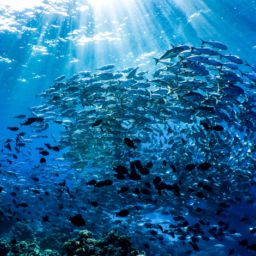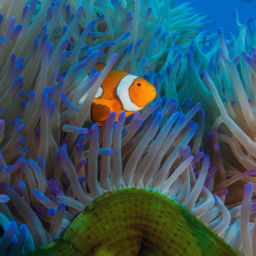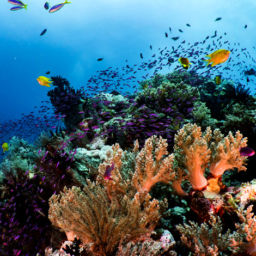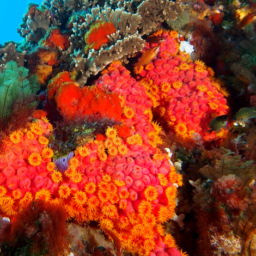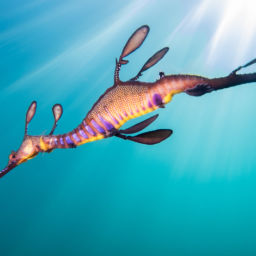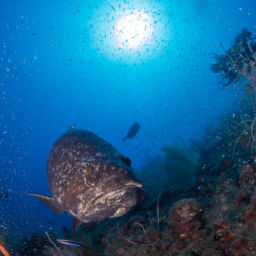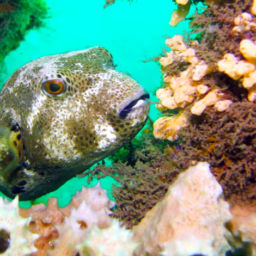Calm seas, clear skies and hardly a breath of wind. Conditions are so good for my 4-day trip to the Coral Sea aboard Mike Ball’s Spoilsport, the skipper is planning ‘Fair Weather’ route, taking in remote Holmes Reef and Bougainville Reef, as well as Osprey Reef. And we’re all pretty excited, especially at the prospect of seeing remote Holmes Reef. No one on board has been there before, except perhaps the skipper. Boats rarely visit — and not just because of the remote location. This particular reef was closed for years following successive bleaching events. We’re all very curious to see what it looks like now.
Arrival at Holmes Reef
When we arrive after an overnight steam, we wake up to an expanse of blue. The Pacific Ocean is as smooth as a pond. Our first dive site, Nonki Bommie, is a large coral pinnacle that drops down to 130 feet (40 m), covered in soft and hard corals and large gorgonian fans.
In the middle of the pinnacle, there’s a slot, its entrance framed by a large yellow seafan, one of the largest I’ve ever seen. My buddy and I keep returning to this beautiful slot after a few laps of the pinnacle, approaching it from different directions and exploring overhangs and the rainbow of soft corals covering most surfaces.
Along its length, the slot is adorned with yellow fans, red, white, pink and blue soft corals, bright red whip coral, with yellow damsels and purple basslets adding even more color to this coral kaleidoscope. Parrotfish, wrasse and surgeonfish graze along the top of the reef and overhead, large schools of jacks patrol the pinnacle, rushing past in formation, glinting in the sunlight.
On our second dive we head to a smaller bommie nearby, adorned with a seafan so large I can’t fit it in frame as I try to photograph it. Schools of yellow striped snapper arc over the huge fan and its soft coral adornments while sweetlips and coral trout hover by feather stars waiting to be cleaned.
Our next site is simply called ‘Amazing.’ It could be thanks to the labyrinthine caverns and swim-throughs here, or perhaps because that’s how divers describe it as they emerge afterwards.
We follow the mooring line down through crystal-clear water and swim toward the reef wall along a sloping sandy bottom, passing a gray reef shark and a few blacktip reef sharks along the way. A few small coral bommies dot the underwater landscape before we reach the wall, which we stop to explore before heading to the maze of swim-throughs. Looking closer at the sandy bottom, we see hundreds of garden eels swaying in the gentle current and on the bommies, purple basslets hover in front of brightly colored fans and whip corals, while cardinalfish hide in the crevices and overhangs.
The health of Holmes Reef
Everywhere we look, the reef is alive with color and marine life. So…what’s all this about the Great Barrier Reef dying? The Great Barrier Reef, like all coral reefs around the world, is under immense threat, climate change bringing with it storms of increasing intensity and warmer waters, causing increasingly frequent coral bleaching events. But Holmes Reef gives me hope.
Holmes Reef has suffered several bleaching events and cyclone damage in recent years. A quick Google search and I find reports of bleaching events in 2002, 2006 and as recently as 2016. The ARC Center of Excellence for Coral Reef Studies survey reports:
“At Holmes Reef, the most northern of the reefs surveyed, almost 80 percent of corals show some sign of bleaching, and of those 40 percent were fully bleached and 25 percent dead.”
After reading this report, written only two years ago, you’d be forgiven for writing it off. But, right now — to see so much life on this dive — is heart-lifting to say the least.
Saving the world’s reefs
The situation is dire, but it’s not too late. The media focus on the Great Barrier Reef’s demise reflects how well-known and well-loved this reef is globally, a message shared by Dr. David Wachenfeld, chief scientist, Great Barrier Reef Marine Park Authority (GBRMPA):
“We’ve got the most famous reef in the world,” he says. “It’s time to toughen up and do what we can to save the reef — these are challenges we need to lean into. And collaboration is the new innovation.”
The collaboration Wachenfeld speaks of brings together science and tourism. A number of collaborations have launched recently, including citizen science-driven projects, such as Citizens of the Great Barrier Reef, GBRMPA’s own Eye on the Reef, which invites visitors to contribute data for scientists to review, and the Master Reef Guides program, which helps educate visitors on the intricacies of the world’s largest living organism on every guided tour to the reef.
Bougainville and Osprey Reefs
My 4-day Coral Sea dive trip also included Bougainville Reef and Osprey Reef and, much like Holmes Reef, both were equally colorful, biodiverse and teeming with life.
We dive Bougainville’s beautiful Southern Wall a few times, exploring the many crevices and tunnels adorned with colorful soft corals. Schools of unicornfish and black surgeonfish buzz by. Our final dives for the day are at Crystal Plateau, a site we’ll remember most for the abundance of marine life, including blacktip reef sharks, coral trout, Napoleon wrasse and a small school of barracuda.
The next morning, we wake up at Osprey Reef and take our first plunge into False Entrance, a gully between two coral bommies. Almost immediately we come across large schools of pike, barracuda, and bigeye trevally before turning along the reef wall, adorned with large gorgonian fans and red whip coral. Reef sharks and mackerel patrol nearby.
Next up is Osprey’s famous shark-feed dive at North Horn, positioned in a natural amphitheater surrounding a small pinnacle where the bait is laid. When the bait is released, it’s a mad scramble for the circling reef sharks and their entourage of remoras, potato cod and other hangers-on, all eager for a free meal.
Our second dive here is along the reef wall, where we encounter incredible biodiversity — longnose emperor, red bass, paddle-tail, striped barracuda, clown triggerfish, titan triggerfish, coral trout of every variation, moray eels, mangrove jacks, cornett fish, swallowtail dart, many-lined sweetlips, Napoleon wrasse, mackerel tuna — just to name a few species we saw on a single dive.
All in all, we had an incredible four days of diving the world’s most famous reef, so if you’re thinking of ticking the Great Barrier Reef off your bucket list, there are lots of reasons to book that dive trip soon.
Top tip
While you may need a thicker wetsuit (5mm), the cooler months provide greater visibility. Northern Hemisphere autumn is the best time to visit. December and January offer warmer water (3mm) and viz is also usually still good as far north Queensland heads into the rainy season.








